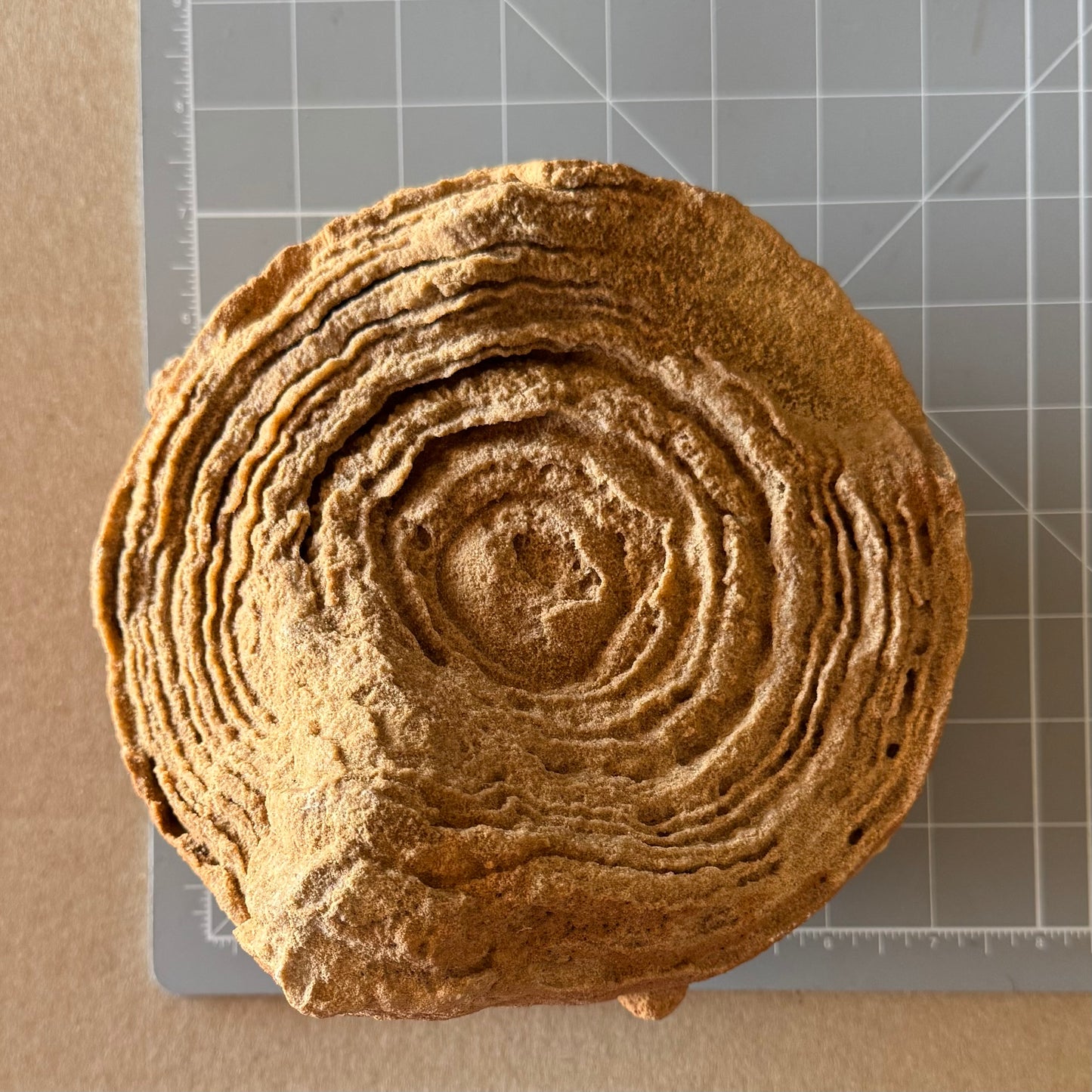Pseudo-stromatolite, extra large
Pseudo-stromatolite, extra large
Regular price
$54.00 USD
Regular price
Sale price
$54.00 USD
Unit price
per
Shipping calculated at checkout.
Couldn't load pickup availability
Locale: Morocco
Approx dimensions: 7 x 6.25 x 4"
Approx weight: 9 lbs 12.5 oz
A stromatolite is a sedimentary fossil structure made by prehistoric bacteria colonies, typically cyanobacteria. Stromatolites in fact are still living and forming in some parts of our world today, including Australia, and are among the earliest forms of life—and fossils—on our Earth.
The fossils form in shallow water conditions of lakes or salt water shores. First, cyanobacteria grow in microbial mats. Minerals like calcium carbonate precipitate (crystalize from the water) onto the surface of the mat. The bacteria acts as a glue, cementing it all together with sedimentary debris. Layers build up over time like a bacterial pearl; the name “stromatolite” appropriately means “layered rock” in Greek.
This, however, is not a stromatolite. They are commonly believed to be stromatolites, and you will more often than not see them sold under that name and description. More accurately, they are concretions formed out of beautiful tones of red sandstone material. These sandstone concretions form in a manner similar to stromatolites, but minus the aid of bacteria: mineral-rich waters precipitate barite which binds with sand to form concentric layers around a nucleus. It is a relative of the barite desert rose, which grows clusters of round blade-like ‘petals.’
This specimen makes for an inexpensive large piece to add to your mineral collection or use as decor around the home. While pseudo-stromatolites typically have a rounded or conical back, this specimen is wide and flat like a lopsided cake with round nubbins attached to the side.
UV reactivity Many pseudo-stromatolites from Morocco have faint to moderate white fluorescence and light yellow-green phosphorescence under 365 nm UV light. This specimen has good reaction, with phosphorescence apparent.


















